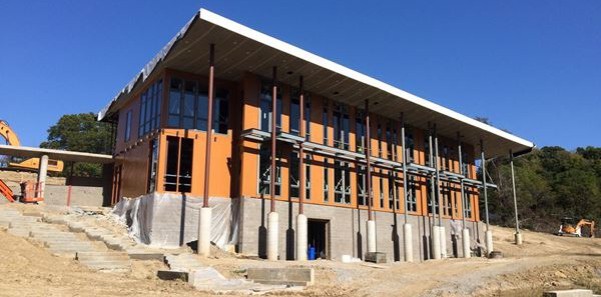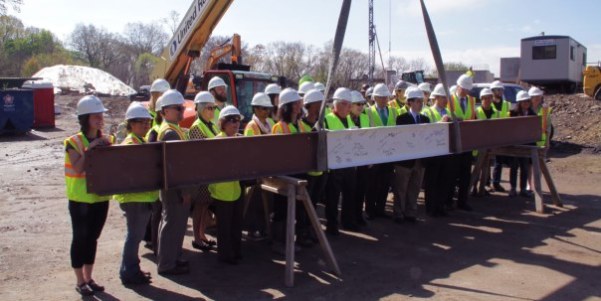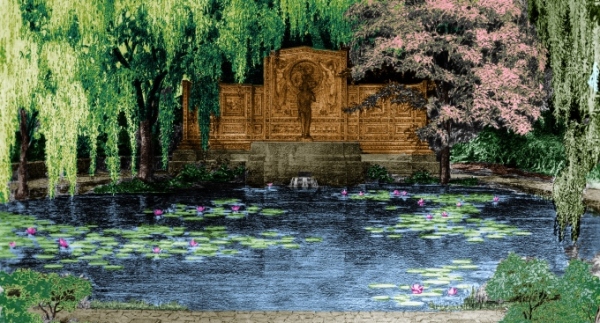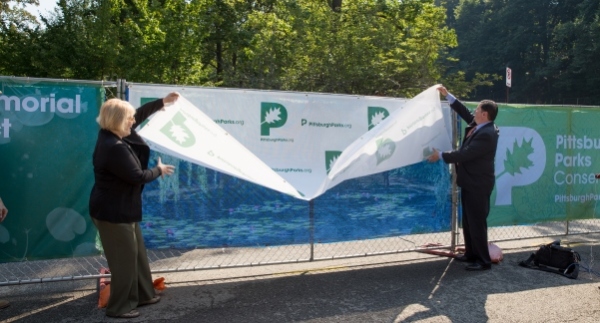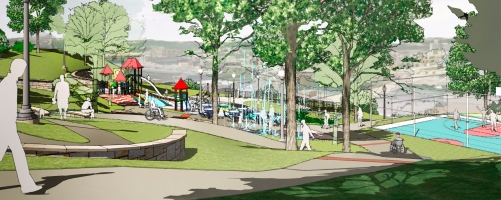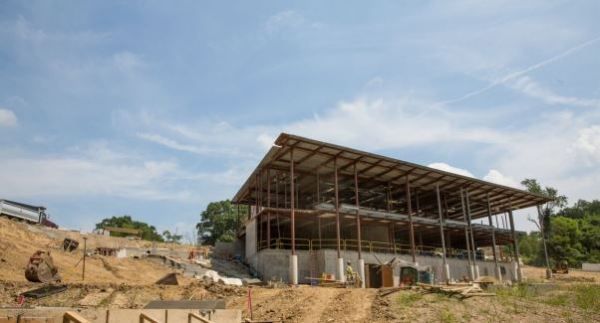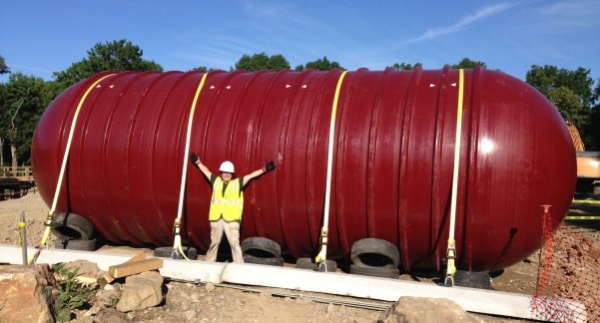Like the unfolding of a page in a pop-up book, the new Frick Environmental Center has been growing from a flat architectural rendering into a real three-dimensional building since last August. In that time, the old, burnt building has been razed, construction has been progressing, and over 250 community members, government representatives, students, members of the press, and others have taken one of our free tours of the site.
Our final tour of the season having just passed, we wanted to offer everyone interested in the building a chance to get in on the ground floor (so to speak) and learn about the building. Missed the real thing? Read on for a virtual walk-through of this exciting project.
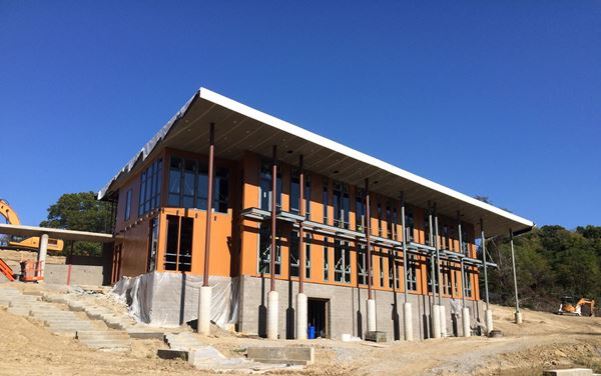
The new Center. Taken October 20, 2015.
Welcome to your park
Before we enter the site (and after we all put on our hard hats and construction vests – this is an active site, after all), let’s talk about the real reason why we’re building this new Center: Frick Park, and all those who come to visit it.
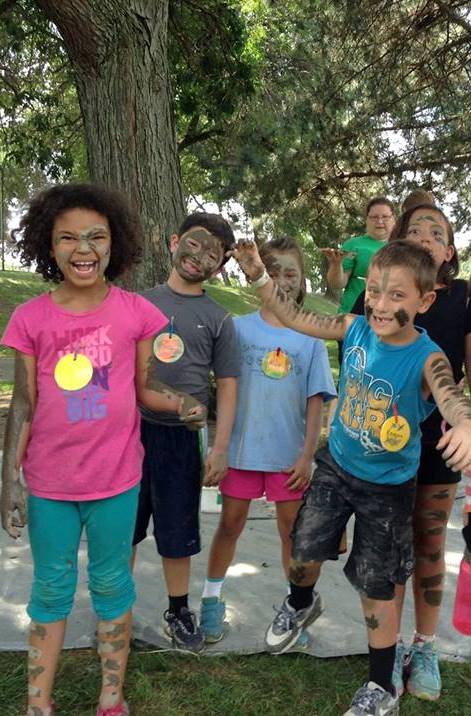
Summer campers in Frick Park.
Great cities deserve great parks, and Frick Park is a real gem. The new Center will be owned by the City, operated by us, and open to all. It will serve as a welcome center for what was designed as the park’s main entrance. Nestled beside an allée of black locust trees that will act as pathway from city to woodland, the new Center will invite park visitors to find new trails, learn park history, and much more with open doors. Park visitors will also be greeted by nearly 200 trees and more than 6,500 native plants planted throughout the new landscape and woodlands.
In addition to being a welcome facility, the new Center will serve as a springboard for the outdoor learning programs that have been taking place in Frick Park for years. We use parks as classrooms, and the building will be an invaluable tool for the programs that take place all year long.
The big idea
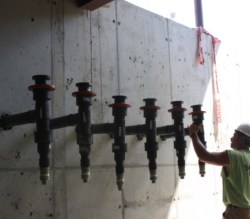
Geothermal tube hook-ups.
Only eight buildings in the world have succeeded in gaining the Living Building Challenge certification that the new Center aims to achieve. This building certification, which defines the most advanced measure of sustainability, is judged on seven performance categories, or Petals: Place, Water, Energy, Health & Happiness, Materials, Equity, and Beauty. During this tour, we’ll be focusing on how the new Center working towards three of the most difficult Petals: Water, Energy and Materials.
As if Living Building wasn’t enough, the Center will also be constructed to achieve Leadership in Energy and Environmental Design (LEED) designation in the highest nomination, platinum. LEED is judged on points; earn some points by installing bike racks, earn big points by installing geothermal.
Living Building Petal: Net-Zero Energy
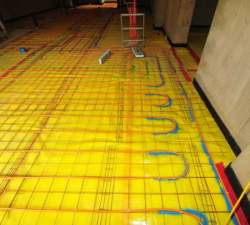
Radiant floor tubing spreads hot, cool temperatures throughout building.
In order to achieve net-zero energy (the Center needs to make more or as much energy as it uses), ultra efficiency is needed. In other words, we don’t have to produce as much energy if we can cut the building’s energy needs. We project that we can use 40% less energy than similarly-sized buildings in our region with our more efficient design, such as a tight building envelope that will hold on to hot or cold air inside the building better than the average 100-year-old Pittsburgh home.
As we all know, our city’s seasons range from polar vortex to Sub-Saharan. While a traditional building would typically have to heat or cool indoor temperatures from whatever the thermometer reads, the Center will have a baseline 55°F to work from. How? An ancient-turned-modern technique: ground heat. With 18 wells bored 520 feet into the ground, we’ll be tapping into ground temperatures that are constant, no matter the season.
Living Building Petal: Net-Zero Water
Do you know how it sometimes rains in Pittsburgh? The new Center is going to be a celebration of precipitation. The Living Building Challenge requires net-zero water, meaning that stormwater must be captured on site and the building won’t depend wholly on municipal water.
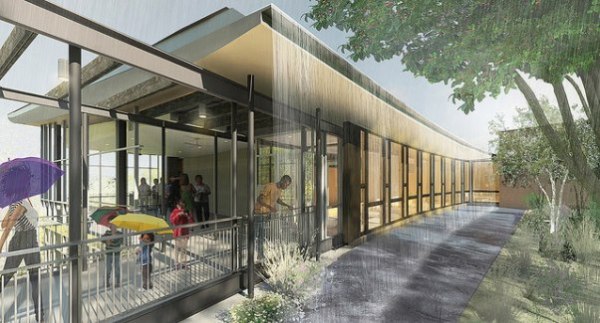
Rendering of the Center’s rain veil.
This goal doesn’t just aid our city’s ailing sewer system; it’s a unique opportunity for us to make the new Center the place to be on a rainy day. The slightly slanted roof will send water cascading off of one side of the building to make a rain veil. An art installation similar to the water steps in front of Heinz Field will playfully send water to recharge park streams. When kids wake up on rainy mornings, we want them to come to the Center.
Not all rainwater will be used for show. Much of it will be captured in an enormous 15,000-gallon cistern for use in practical applications like watering plants and restrooms, eventually to be treated and released on site.
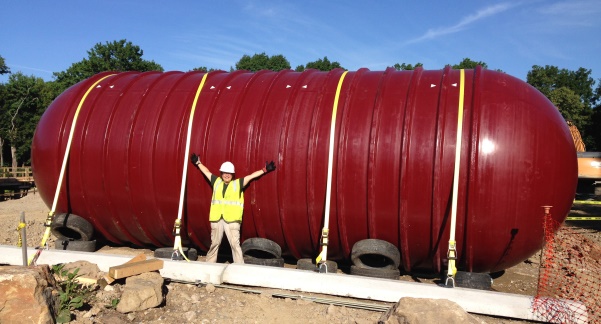
The 15,000-gallon water cistern before being put underground.
Living Building Petal: Materials
Every single material that makes up the new Environmental Center is painstakingly chosen based on certain Living Building criteria. Is it locally sourced? Is it a possibly health or environmental risk? Does it off-gas? Materials like PVC piping are on the red list, meaning they’re not allowed in the building. Even the hard hats are checked: the main ingredient in them is actually sugar cane!
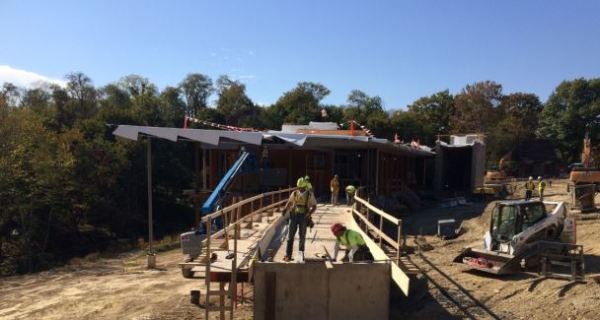
Other fun features
There are so many exciting features of the new Center. But the building is not the whole story. Here’s what else you can expect from the project:
- A renovated fountain. Remember the old, busted fountain that sat unused on the site? We’ll be restoring this popular water feature that begs to be sat beside.
- Solar panels where you park. One important point that community members made during the planning process was preserving parking. Fear not! Parking remains, and with an added feature: a solar canopy. This will keep your car cool on sunny summer days while providing power and channeling water to the cistern.
- A new barn. The people have spoken, and they also want more restrooms. The new barn, near the parking lot, will also help us collect stormwater for use on site.
- Restored gatehouses. Originally designed by the esteemed John Russell Pope, the restored gatehouses will once again be brought back to their former splendor.
We hope you’re as excited as we are for this project. It is, after all, for you! Like what you’ve been reading? Support this project with a gift today!
Stay up-to-date on what’s happening with this project. Visit our site for weekly updates.
